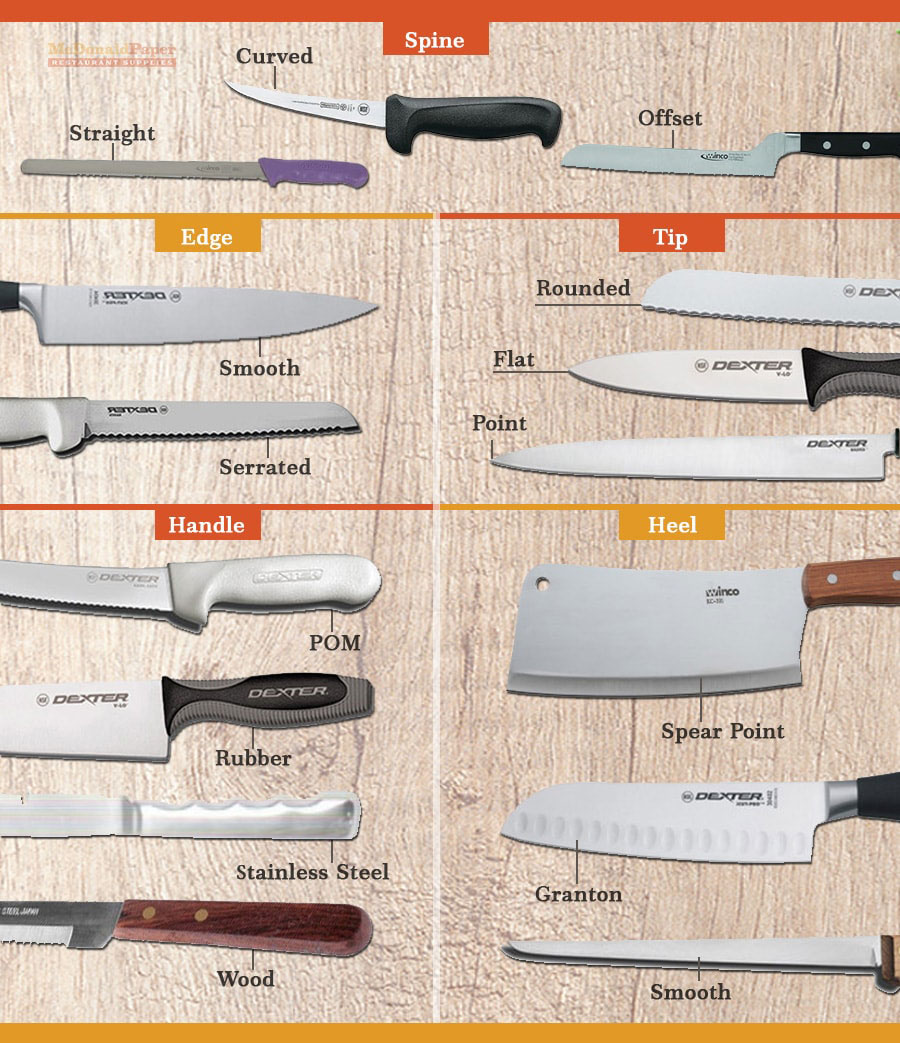Those who think of a chef's knife as just another simple kitchen appliance should definitely think again. Since cooking is considered to be an art form, a chef's knife is one of the most important tools with which the art is made. Even if a cook has all the proper knowledge on how to prepare the food, lacking the proper tools will lead to weaker results. And until the cooking process gets to actually putting the ingredients together in an oven or a frying pan, everything needs to be perfectly chopped, sliced and cut. Here's where a professional cooking knife comes into play ensures the perfect link between a chef's knowledge and experience and an exceptional dish.
For those that are interested about the main components of a chef's knife, we have prepared a comprehensive guide that will cover all the important aspects of such a knife, helping you to make the difference between a regular one and a chef's knife.

Blade
Considered the most important part of a knife, the blade ensures a fine and precise cut, allowing the cook to reduce the ingredients to desired seizes. The best kitchen knives are produced with the use of high-carbon stainless steel, which guarantees durability and effectiveness through years of cooking at top level. Such a knife will never lose color or get rusty and the time before it starts to get dull is considerably longer than with a regular knife.
Even though the blade is made of a single, solid piece of steel, its still divided into several composing parts, each with its own name and function. For instance, the blade's upper part is called spine - it is the thickest part of the knife used for breaking up bones or shellfish. Knives come with straight, offset, or curved spines, each with its specific use.
The lower cutting part of the knife is composed of two different areas. The heel - this is the first part of the cutting edge right after the bolster and its shape can either be spear point, granton, or smooth. The edge is the other composing part of the cutting part and it is the actual cutting edge. This can be straight or serrated, depending on the type of chef's knife we are talking about. Finally, the tip - the narrower part of the cutting edge used for delicate works with products, and as a mincing anchor; comes in rounded and flat types.
Finally, the meeting point of the spine and cutting part is the knife's point. This element of a knife is traditionally used for piercing objects.
Handle
The knife's handle is its part that a chef uses to have a firm grip and to operate the knife properly. Materials used for handles differ with different types of chef's knives. The materials include rubber, stainless steel, wood, and POM, and may be selected depending on the user's individual taste and preference.
Bolster
This is the middle part of kitchen's knife separating the blade and the handle. Though it may seem to be only a technical component with no functionality, in fact, it contributes to the knife's stability and balance by adding mass to it. The bolster is usually equipped with a finger guard, that also strengthens the heel and, as its name suggests, protects fingers from occasional accidents.
As you can see, a professional chef's knife contains many more components besides the blade and the handle. Knowing these components, you will have a better view when it comes to buying a chef's knife and selecting the proper tools for your kitchen. If you want to have access to a complete list of top-quality kitchen knives, check https://mcdonaldpaper.com/kitchen-cutlery right now!



